Embarking on the journey to attract hummingbirds to your garden is a thrilling venture, and strategic placement of their feeding stations is key.
“Tips for Where You Should Hang a Hummingbird Feeder” offers insights into creating an ideal haven for these enchanting birds.
From balancing sunlight exposure to providing a safe distance from windows, these tips aim to enhance not only the accessibility but also the overall well-being of the hummingbirds.
As you delve into this guide, envision a harmonious garden where the delicate flutter of wings and the vibrant blooms converge, creating a haven that beckons these winged wonders.
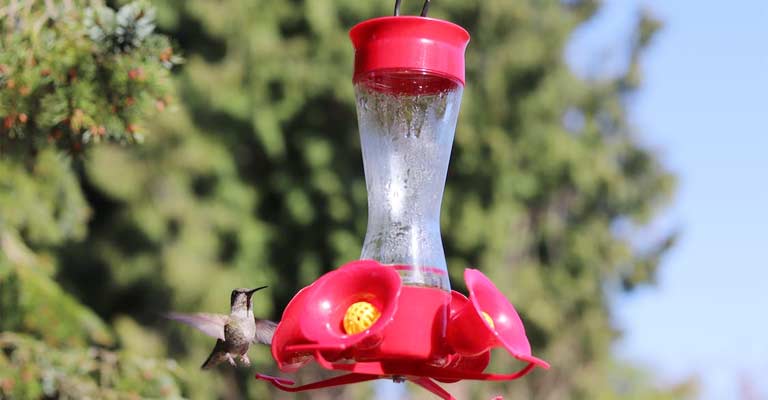
Tips For Where You Should Hang A Hummingbird Feeder
Creating an ideal environment for hummingbirds involves more than just planting the right flowers; it also includes strategic placement of hummingbird feeders.
Here are some tips to help you decide where to hang your hummingbird feeder
Sun and Shade Balance
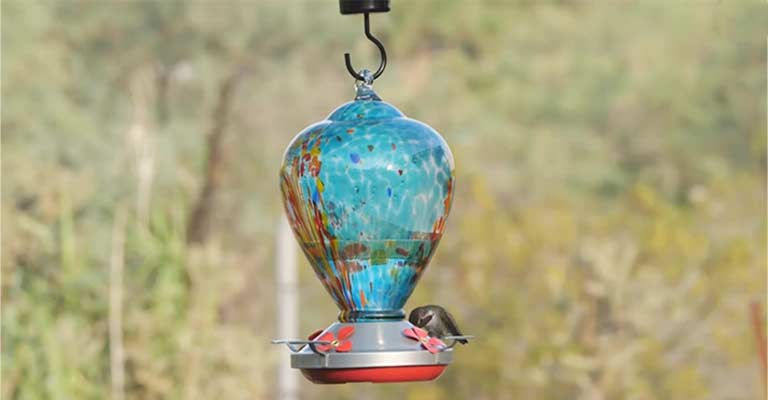
Select a location that provides a balance of sun and shade throughout the day. Too much direct sunlight can ferment the nectar quickly, while complete shade may make the feeder less visible to hummingbirds.
Visibility from Cover
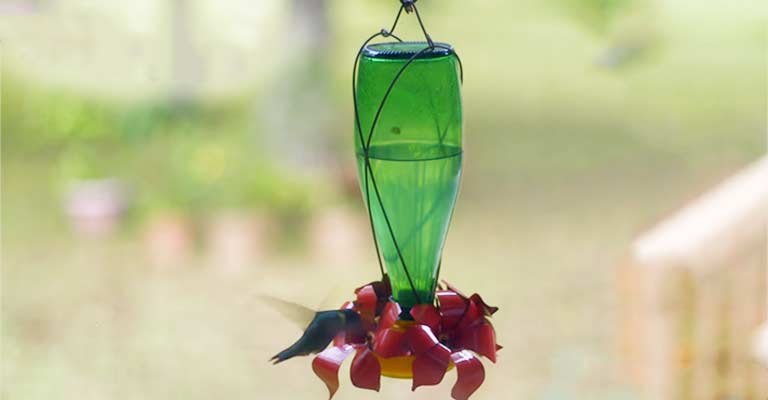
Hang the feeder within the line of sight but near the cover. Hummingbirds prefer feeders close to trees or shrubs, allowing them to perch and observe before feeding, enhancing their sense of security.
Distance from Windows
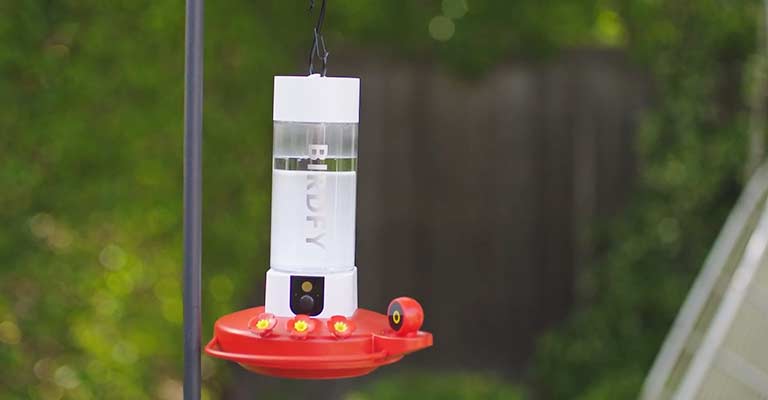
Avoid placing the feeder too close to windows to prevent collisions. Position it at least three feet away, reducing the risk of hummingbirds flying into the glass.
Protection from Wind
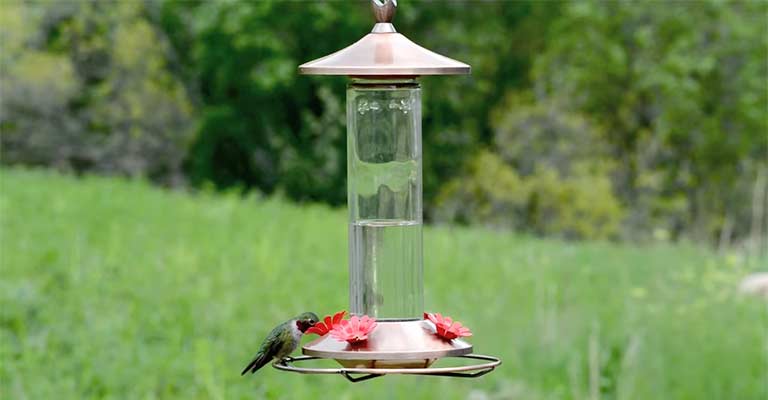
Hang the feeder in a sheltered spot to minimize swinging in the wind. This stability makes it easier for hummingbirds to feed comfortably and reduces the chance of spills.
Easy Accessibility
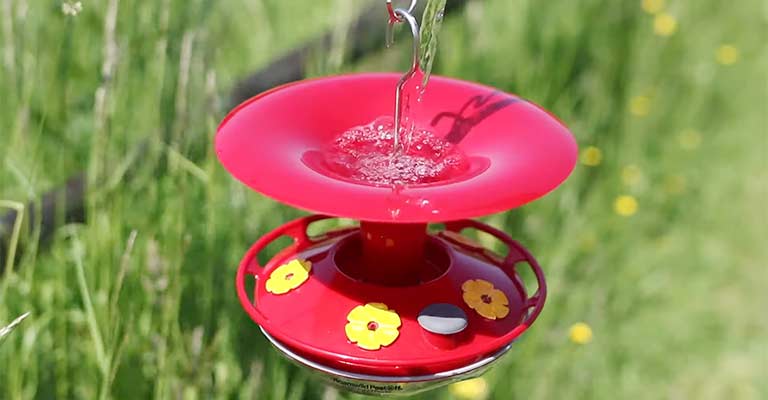
Choose a spot that is easily accessible for refilling and cleaning. This ensures you can maintain a fresh supply of nectar, which is crucial for attracting and retaining hummingbirds.
Away from Pests
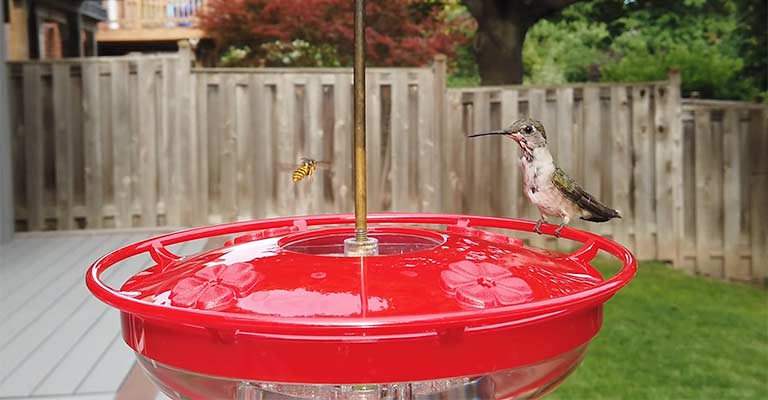
Position the feeder away from bee and wasp traffic. Hummingbirds are deterred by the presence of these insects, so placing the feeder strategically can help minimize unwanted guests.
Seasonal Adjustments
Consider adjusting the feeder’s location seasonally. In warmer months, a more shaded spot can prevent nectar spoilage, while in cooler months, a sunnier location can be beneficial.
Where Should You Not Hang A Hummingbird Feeder?
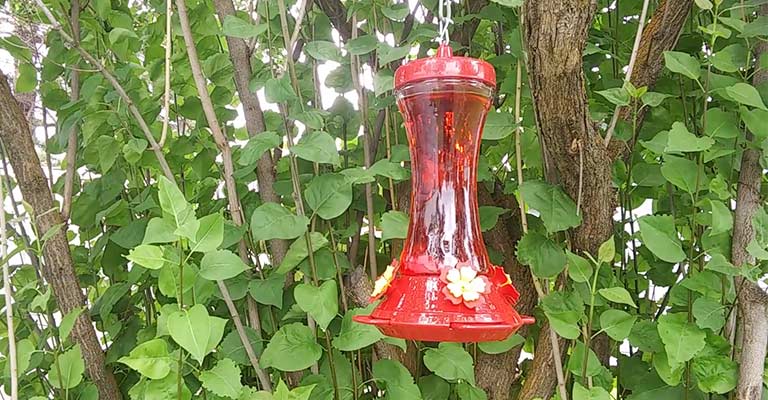
While placing a hummingbird feeder is crucial for attracting these delightful birds, knowing where not to hang it is equally important. Avoiding certain locations ensures the safety and well-being of the hummingbirds.
Here are some places you should avoid when deciding where to hang your hummingbird feeder:
Direct Sunlight All Day
Avoid hanging the feeder where it receives direct sunlight all day long. The heat can cause the nectar to spoil quickly, potentially harming hummingbirds and diminishing the attractiveness of the feeder.
Too Close to Windows
Don’t hang the feeder too close to the windows. Hummingbirds, known for their rapid flights, may collide with the glass, leading to injuries or fatalities. Place the feeder at least three feet away to reduce the risk of collisions.
Underneath Eaves or Overhangs
Steer clear of hanging the feeder directly under eaves or overhangs. Hummingbirds prefer open spaces, and positioning the feeder in sheltered areas can make it less visible and inviting to them.
In Heavy Windy Areas
Avoid hanging the feeder in areas prone to heavy winds. Excessive swinging can make it difficult for hummingbirds to feed comfortably, leading to spills and potential injuries.
Near Bee and Wasp Nests
Don’t place the feeder close to bee or wasp nests. These insects are attracted to the sugary nectar and can deter hummingbirds. Maintain a safe distance to minimize unwanted competition.
Over a High-Traffic Area
Steer clear of hanging the feeder directly above high-traffic areas. Falling droplets of nectar or bird droppings may pose a nuisance to people or pets passing underneath.
Near Seed Feeders
Avoid hanging the hummingbird feeder too close to seed feeders. Larger birds attracted to seed feeders may intimidate hummingbirds, deterring them from visiting the nectar source.
Things To Keep In Mind Before Hanging A Hummingbird Feeder
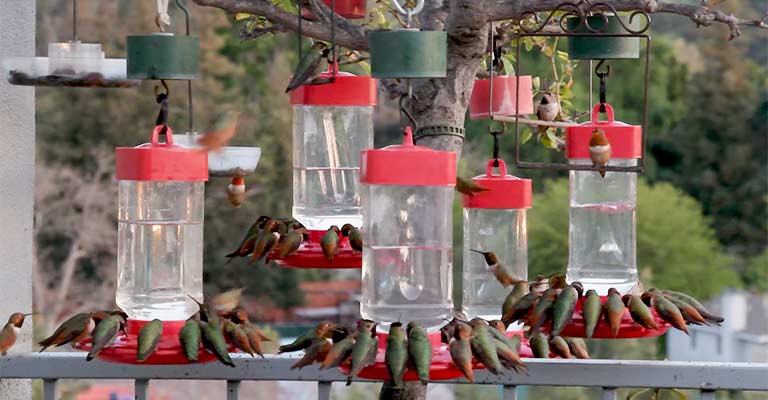
Before adorning your garden with a hummingbird feeder, it’s crucial to consider various factors to ensure the well-being and attraction of these tiny avian visitors.
Here are some essential things to keep in mind before hanging a hummingbird feeder:
Cleaning and Maintenance
Prioritize regular cleaning of the feeder. Ensure it’s easy to disassemble for a thorough cleaning, preventing the growth of harmful mold or bacteria. A clean feeder is essential for the health of hummingbirds.
Nectar Mixture
Prepare the nectar mixture carefully, using a solution of four parts water to one part white granulated sugar. Avoid using red food coloring or artificial sweeteners, as these can be harmful to hummingbirds.
Feeder Placement
Select an optimal location for the feeder. Choose a spot that balances sunlight and shade, is easily accessible for maintenance, and provides a clear line of sight for hummingbirds while offering nearby perches.
Distance Between Feeders
If you plan to hang multiple feeders, ensure an adequate distance between them. Hummingbirds are territorial, and too many feeders clustered closely can lead to aggressive behavior.
Protection from Pests
Incorporate ant moats and bee guards to prevent unwanted visitors. Ant moats can deter ants from reaching the nectar, and bee guards can help minimize competition from bees and wasps.
Safe Distance from Windows
Hang the feeder at least three feet away from windows to prevent collisions. Hummingbirds, with their swift and erratic flight patterns, may otherwise collide with the glass, causing harm.
Seasonal Considerations
Adjust the feeding routine based on the seasons. In warmer months, clean the feeder more frequently to prevent nectar spoilage, and in cooler months, consider using warmer nectar to attract hummingbirds.
By keeping these considerations in mind, you’ll ensure a safe, inviting, and well-maintained environment for hummingbirds, fostering their presence and creating an enjoyable experience for both the birds and those who observe them.
FAQs
Can I hang the feeder close to the windows?
It’s advisable to place the feeder at least three feet away from windows to prevent collisions. Hummingbirds, with their rapid flight, may otherwise accidentally collide with the glass.
Should the feeder be hung in direct sunlight or shade?
Find a spot that balances sunlight exposure. Too much direct sunlight can spoil the nectar quickly, while complete shade may make the feeder less visible to hummingbirds.
Can I hang multiple feeders close to each other?
While it’s possible to hang multiple feeders, ensure an adequate distance between them. Hummingbirds are territorial, and spacing them out minimizes aggressive behavior.
Is it necessary to use ant moats and bee guards?
Ant moats and bee guards are beneficial additions. Ant moats deter ants from reaching the nectar, and bee guards help minimize competition from bees and wasps.
Should I adjust feeder placement based on the seasons?
Yes, consider seasonal adjustments. In warmer months, clean the feeder more frequently to prevent nectar spoilage, and in cooler months, use warmer nectar to attract hummingbirds.
Conclusion
In the delicate dance of nature, where floral beauty meets the aerial prowess of hummingbirds, the significance of where you hang a hummingbird feeder becomes apparent.
The tips provided ensure a thoughtful and considerate approach, fostering an environment that maximizes the comfort and safety of these vibrant visitors.
By strategically placing feeders, you invite a symphony of color and motion into your outdoor space, creating a sanctuary where the grace of hummingbirds is met with the precision of well-placed feeding stations.
As you implement these tips, envision a garden alive with the magical presence of hummingbirds, a testament to the thoughtful placement of their feeding stations.